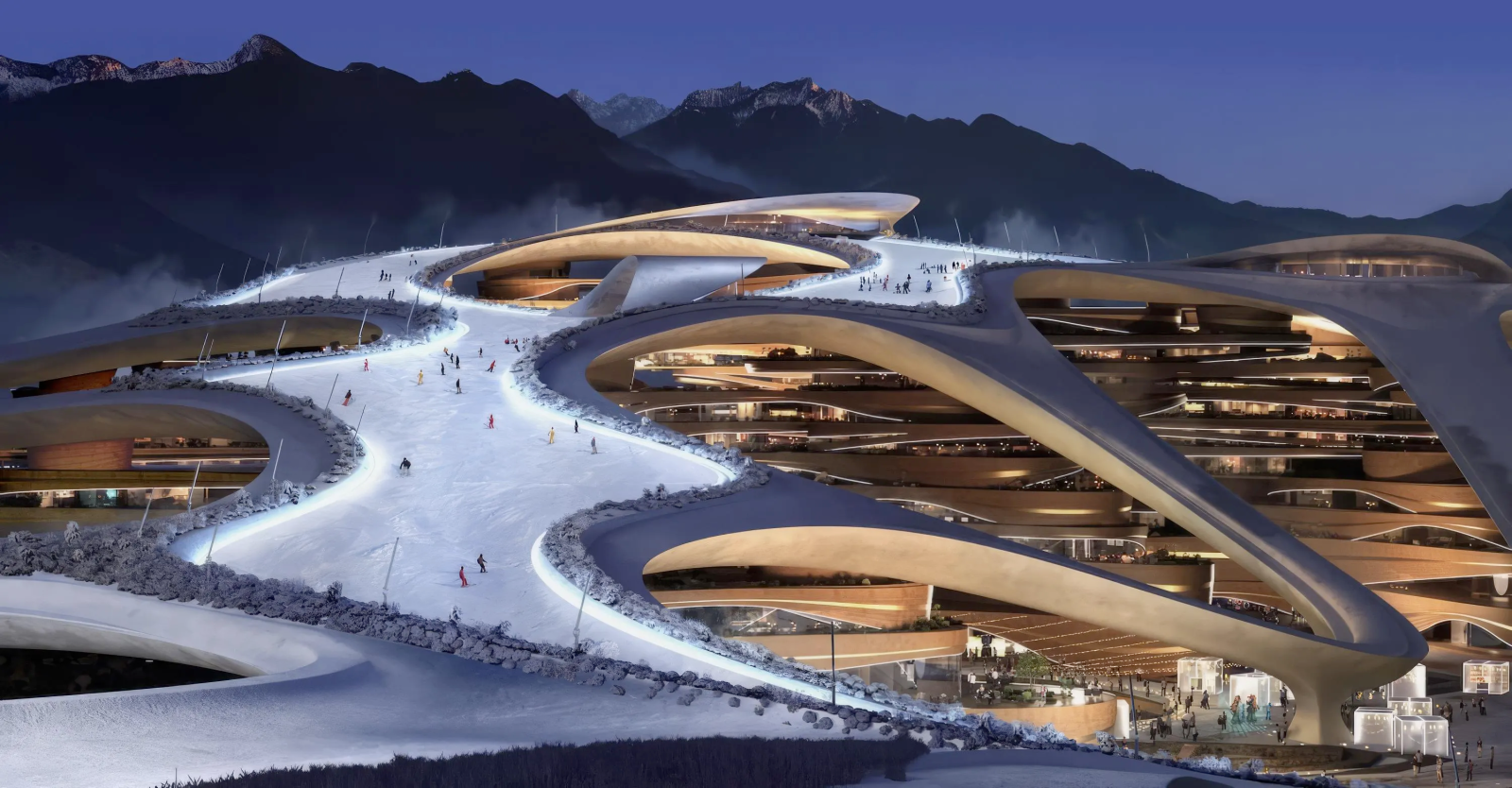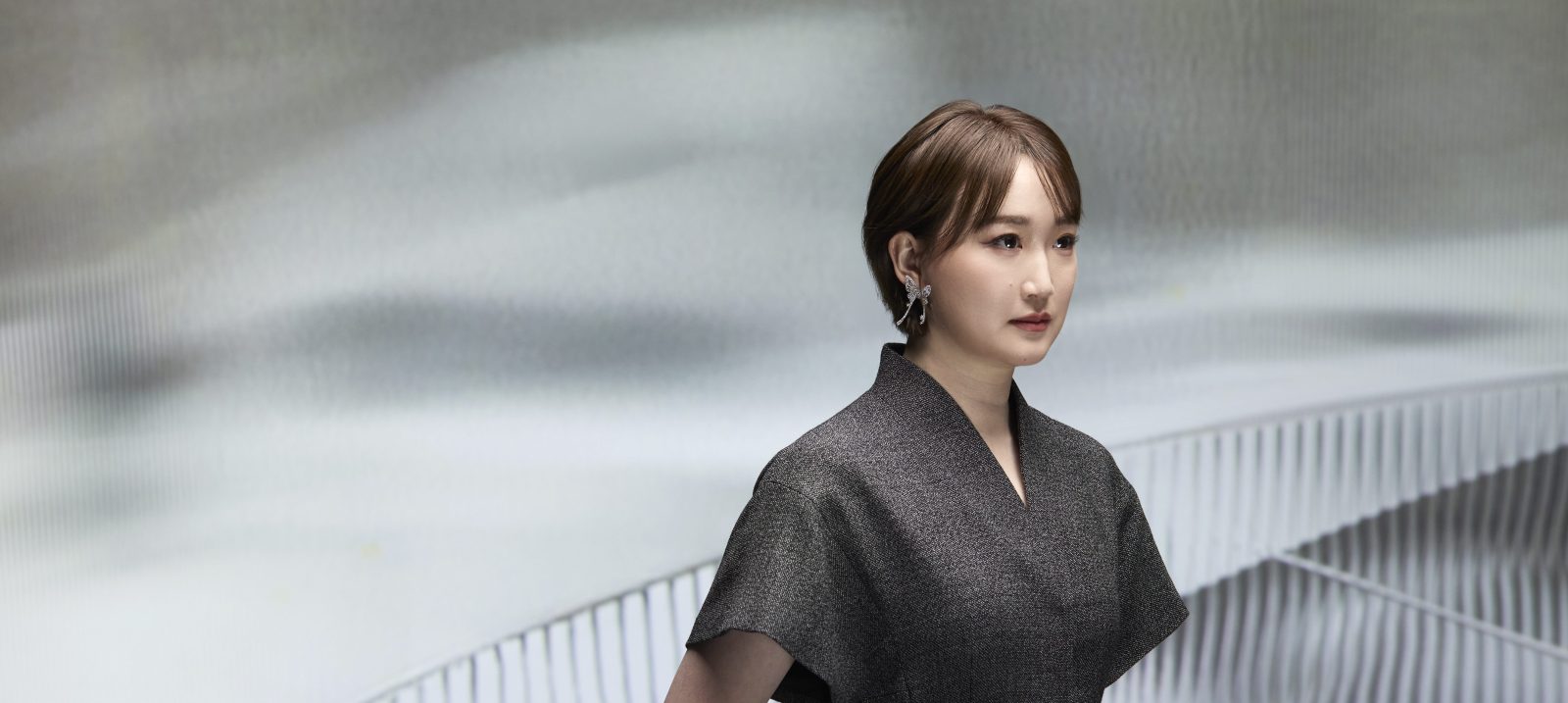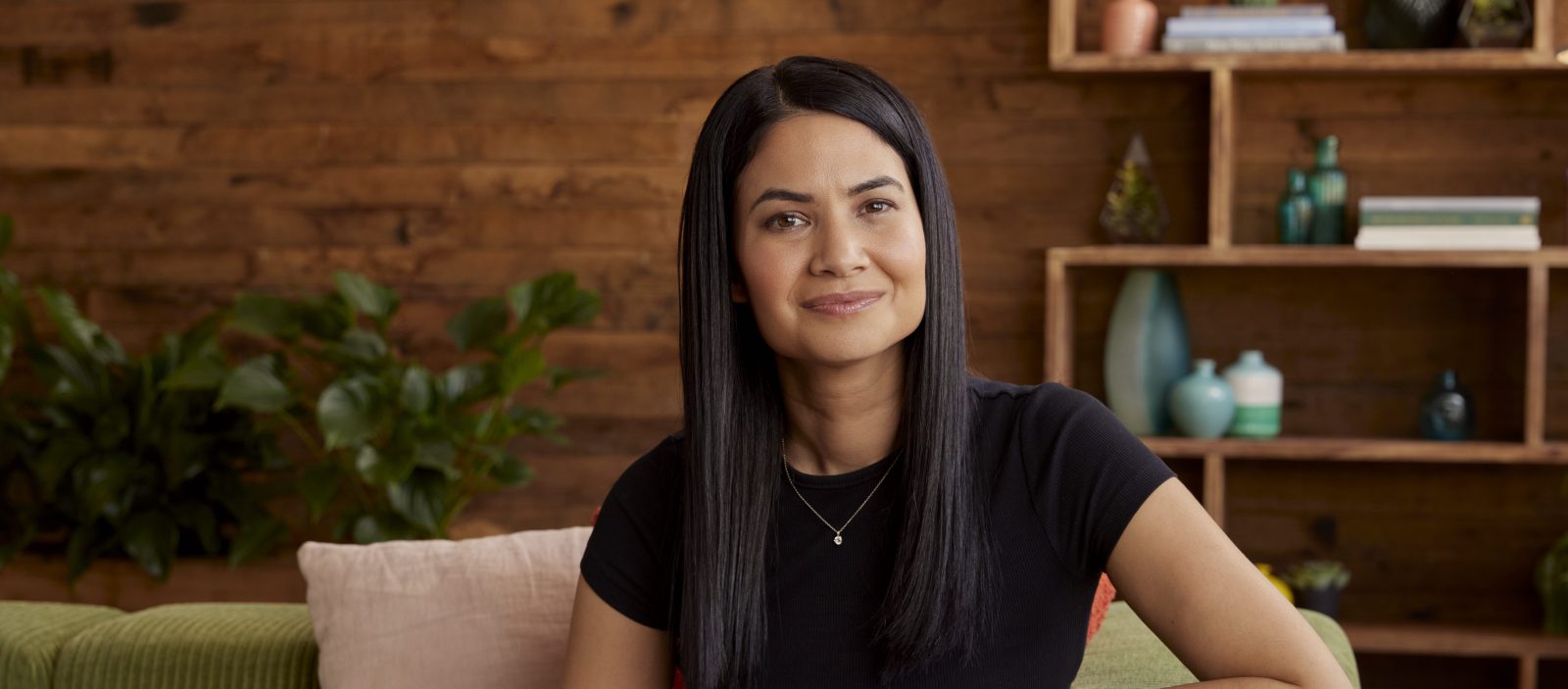Scenic World and the Hammon family took on some of Australia’s wealthiest and won. Here’s how they grabbed the keys to BridgeClimb — and what they did next.
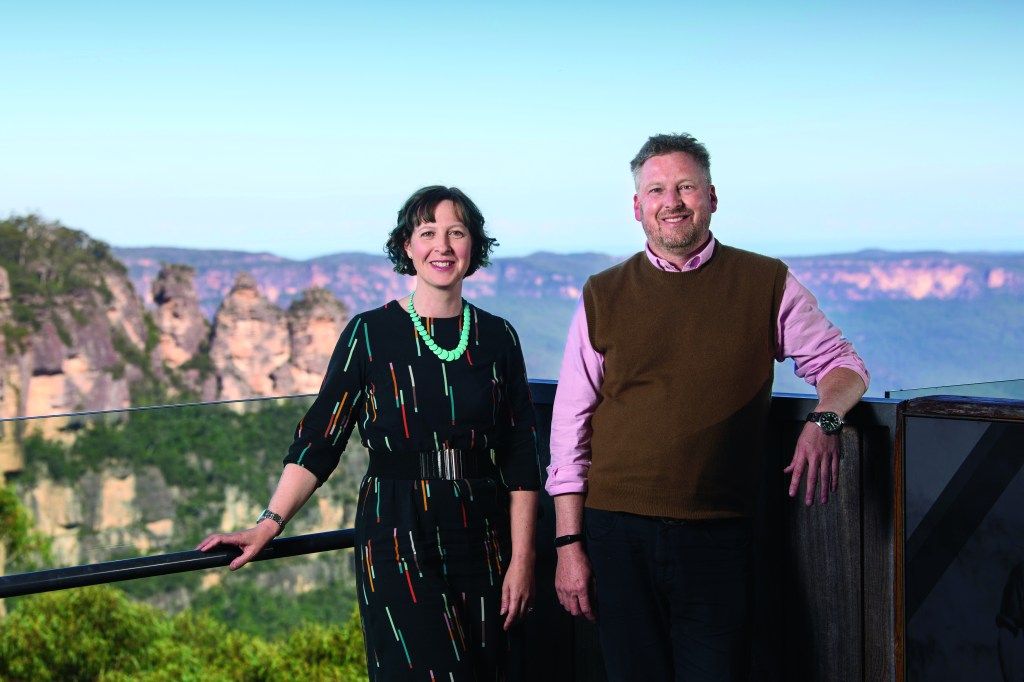
When Anthea Hammon declared she wanted to be a mechanical engineer, her older brother David felt an enormous weight lift. He was off the hook.
Anthea had been inspired by following her father, Philip Hammon, around the family business, Scenic World in the Blue Mountains west of Sydney: working the train that went up and down the Katoomba cliff face; the cable car that flew out across the far-below valley; and the machinery driving it all.
“Dad always wanted one of us to be an engineer,” says Anthea. “He had his hopes pinned on David.” But her older brother was more into the money side, going back to when he emptied the video machines of 20-cent pieces into great heavy buckets of dosh – getting a few games in while he was at it.
When their father announced, in 2007, he was handing over the running of the business to Anthea, then 27, and David, 30 – avoiding the awful situation his own increasingly impaired father had put him in with no succession plan – the brother and sister launched their leadership careers straight off the cliff of the Global Financial Crisis.
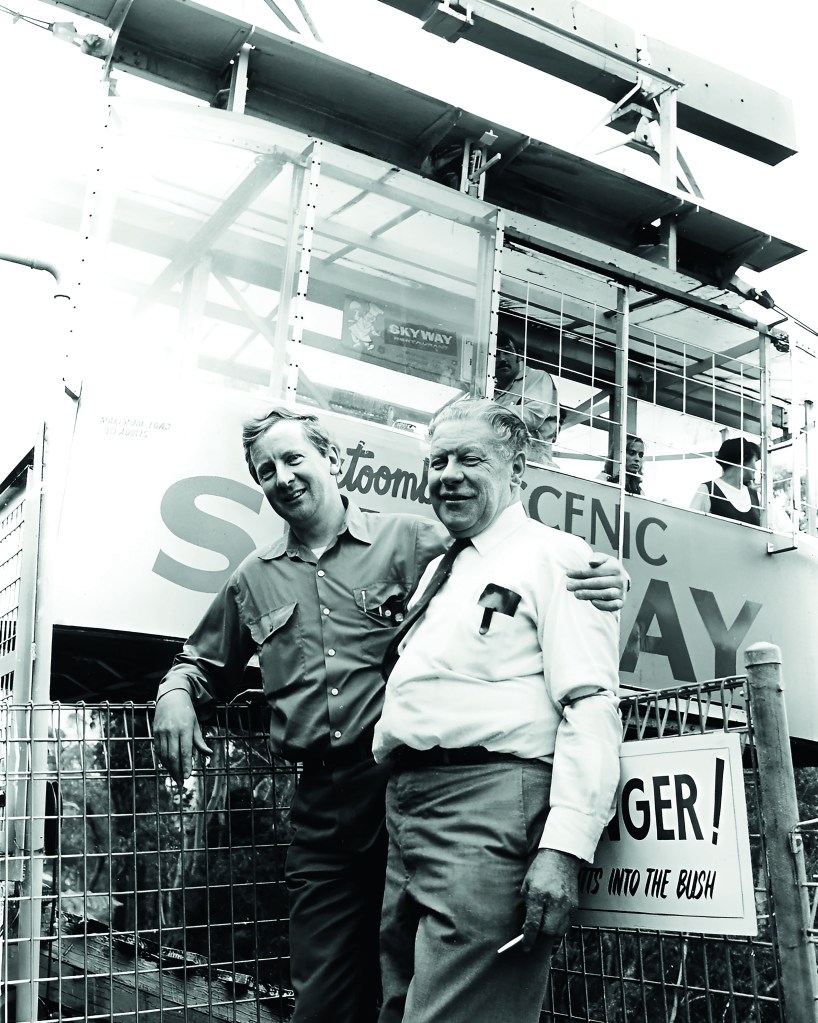
It wasn’t the first – or last – time the Hammon family would stare down a cliff and step off anyway. The third generation now lays claim to owning Australia’s largest private tourism business, having taken Bridge Climb off the Jack-Gance-Jack Cowin team, taken a share in Sydney Zoo, and having won the right to run the slopes at Australia’s first indoor ski field.
But it all began with a mine, a cliff, and a hunch.
Eighty years ago, Anthea and David’s grandfather, Harry Hammon, an electrician, truck driver and entrepreneur, had come across a group of GIs who wanted to go down the near-vertical rail line that carried coal up from a mine on the floor of the Jamison Valley. A group of miners used to run it for tourists in their spare time. “Harry had to inform them that it only ran on weekends,” says David, dressed in a polo shirt and shorts in the office right where that conversation took place in 1945.
“But at that moment, the lightbulb goes off,” Anthea finishes David’s story, as they often do. “And he’s like, ‘What if we buy this thing and run it every day as a proper tourist attraction?’” Anthea has a shock of green hair and is wearing a red ski parka against the air-conditioning’s chill.
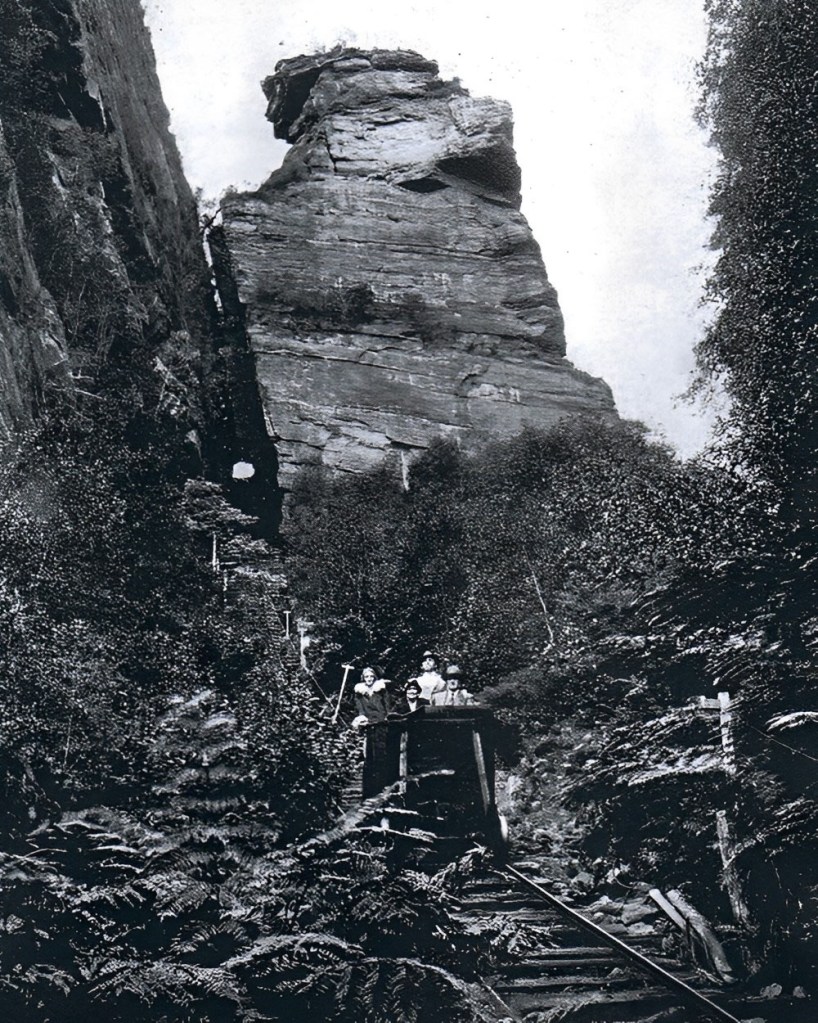
“Harry’s famously quoted as saying if all went well, he might make a tenner a week,” says David.
It went somewhat better. In 1958, he added the Skyway, a giant gondola across the valley, and in 1960, Australia’s first revolving restaurant. Harry’s son Philip, an electrician, entered the business in the 1970s and set about modernising where he could, learning to code computers to drive the machinery. Still, Harry was in no rush to step aside.
Anthea and David remember their grandfather as the benevolent dictator who kept his vanilla almonds safe from them in his safe. By the time they were teenagers, dementia was taking hold, but he continued to insist he was still in charge.
Philip hired a minder who dressed for business. “The minder’s sole job was to turn up at Grandpa and Grandma’s house every day, get Harry out the door and into the car, then distract him from going to Scenic World. ‘We’ve got a really important meeting in the diary.’”
Every day was a new day, but it didn’t always work. They knew it was time for more drastic action when he started prodding tourists down the platform with his walking stick, or the time he took charge of a train and forgot to duck when it went into the tunnel, causing a great, bloody gash and more than a few concerned passengers.
Meanwhile, the business was groaning under the weight of the tourism boom that followed the floating of the dollar. “I was working in tickets,” says Anthea. “I remember busload after busload of Japanese coming through in the ’90s and charging them all $2.40 for a ride. Dad would get here at 8:30, ready to open at nine, and there’d be six tour coaches sitting out in front full of people waiting to get in.”
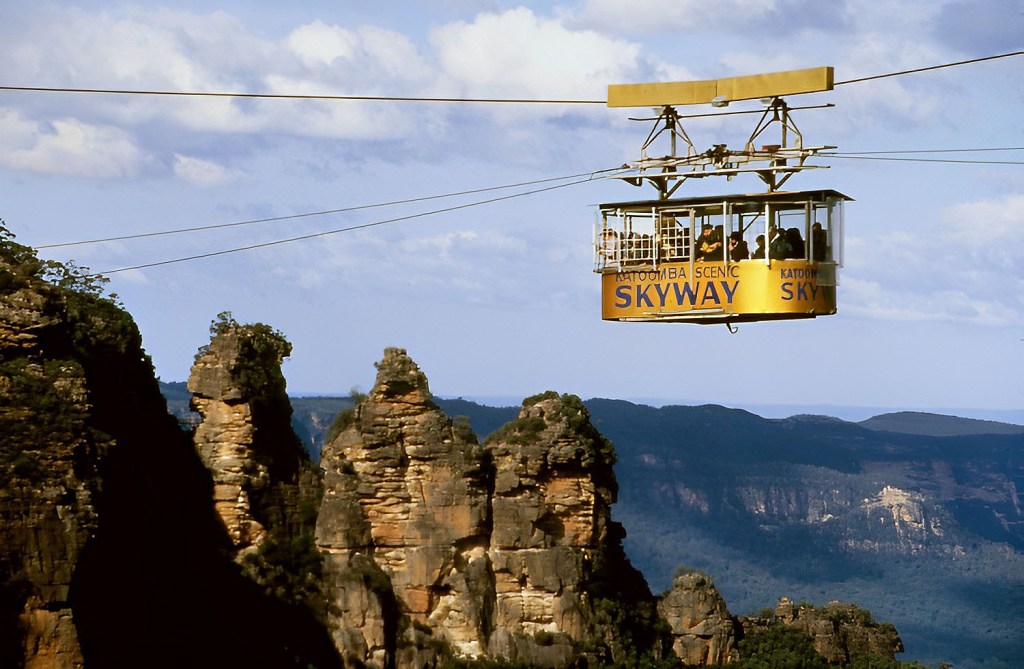
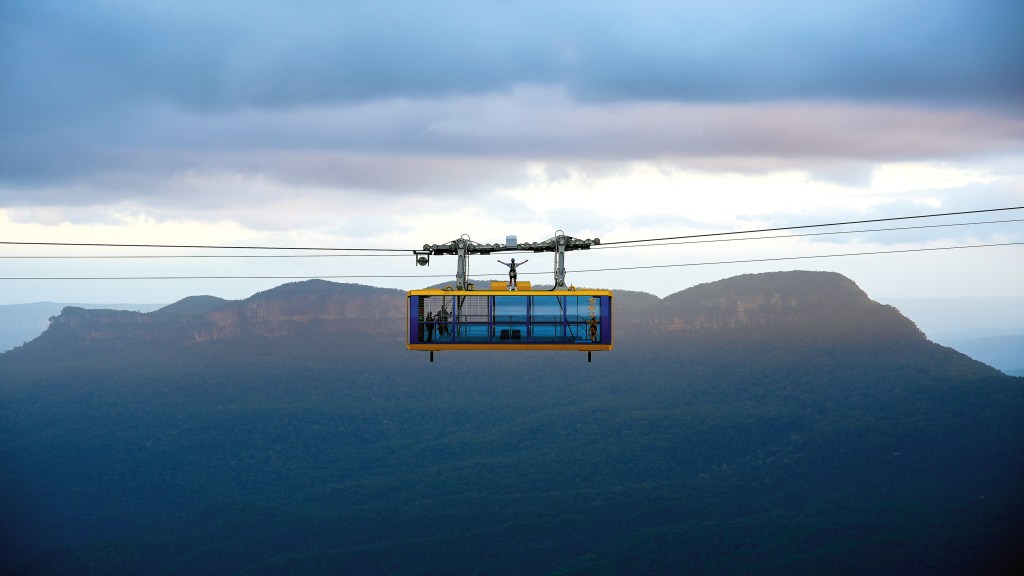
Philip proceeded to use some of the buckets of cash the business had earned over 50 years to upgrade all the equipment, build an enormous car park, and begin planning a cable car up from the valley so that they had two ways of getting the 750,000 annual visitors up and down.
It was challenging because Harry’s Depression-era, can-do, penny-pinching ways meant he hadn’t always complied with the local council’s will. Philip had to build trust to get approvals from a sceptical local government which put him on a tight leash. But he built the cable car with a Swiss company, Garaventa AG, then turned to the Skyway. “It was still the 32-passenger 1958 version with not as many safety controls as one might think it should have,” says Anthea. “Dad invested $35-ish million into the business in seven or eight years. Grandpa was in that old-school, just keeping the cash.”
Anthea finished her engineering degree in 2004 and had no intention of coming straight back to the business. “But I told Dad, ‘You need someone to come in and overhaul the maintenance systems to match all your new rides.’ He just hadn’t had time to get to that; hanging 84 people off a rope, it’s important that everything goes right.” He asked her to come back and do it.
David returned to the business three years later, having graduated in economics and business at ANU in 2000. And Philip set to work on a more orderly succession than he’d enjoyed.
“He’s 50-something and has made a massive difference,” says Anthea, “but not even 10 years after taking over, his son and daughter are chomping at his heels, saying, ‘How long till you go, Dad?’”
Philip called them in for a meeting in late 2007. “He said, ‘You guys go and run it now and I’ll be here writing my book [about coal mining in the Jamison Valley] and I’ll see how long it takes before you have to come and ask me a question,’” recalls David. “I think he expected us back later that day. It was six weeks before we needed to ask him something. Disappointing to him, but it was good for Anthea and me because we knew we were up for it.”
“We didn’t know what we didn’t know, which was a little bit handy.”
Anthea Hammon, on rebuilding the world’s steepest rail line.
The world economy was booming, and they almost reached 900,000 visitors in their first year, but through 2008, they could see the international numbers falling. “You can see the GFC coming,” says David. “We’re a discretionary leisure spend, so if people are suspicious about the future, we’re the first thing they’ll pull.”
The last thing on their father’s renewal agenda was the business’s mainstay, the Scenic Railway. The old vertical coal train had gone from 12 passengers to 24, then 48, and the latest iteration was nearing its 20-year design life. “It was hitting what they call the ‘maintenance bathtub’ where things start to need more attention,” says Anthea.
“It’s a big job. I’m 30 and Anthea’s 27,” says David. “And we decided between us that we need to undertake this redevelopment. Visitation had dropped right off, but we had cash on hand and knew it would come back. The aim was to get it done so that when we clear this global financial crisis, we’re sitting here with a brand-new ride, ready for the next wave. Had we known what we know now, we probably wouldn’t have done it.”
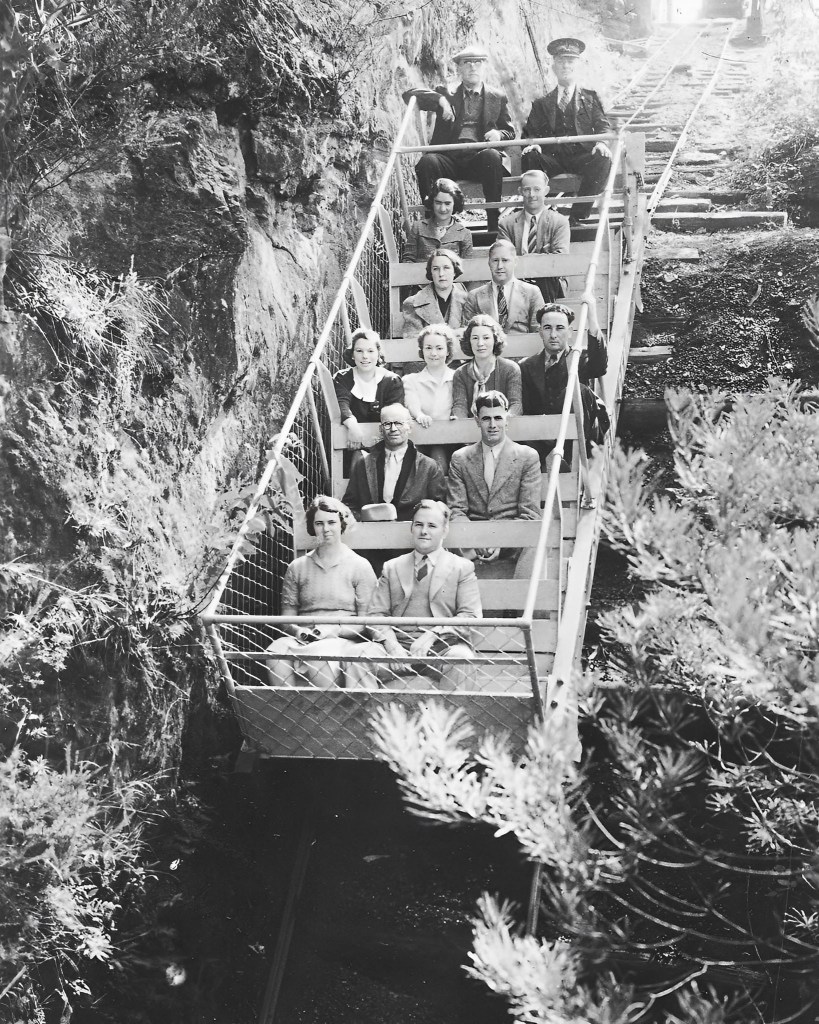
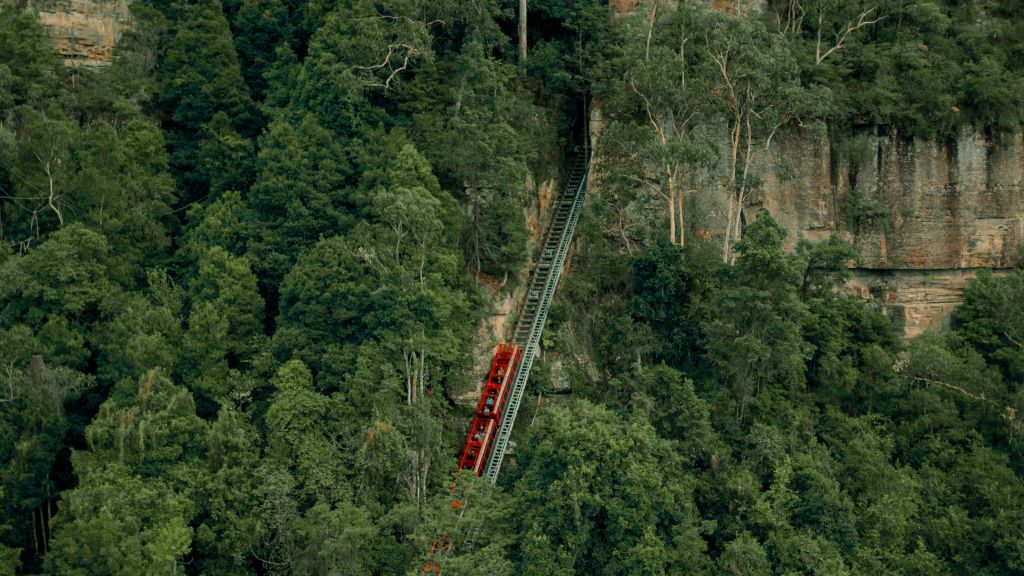
It was hard to price the building of the world’s steepest rail line [as per the Guinness Book of Records at 52 degrees] over a pre-existing line that needed to continue operating as long as possible. “We didn’t know what we didn’t know, which was a little bit handy. But we had smart people around us.”
It took three years and cost twice their estimate. Six weeks before reopening in 2013, a storm dislodged a 100-tonne boulder, which smashed the bottom worksite, disrupting access and dislodging footings. But the engineers, Grindley, finished it a day before the Easter long weekend rush.
Back to the Edge
Where their father had run the business with just two managers, his children brought in experts.
“Anthea and I realised early on that she’s a good engineer and I’m a good economist, sorry, she’s a great engineer, but that we’re not that great at HR and we’re not that great at marketing. The business was big enough now to support those roles.
“Sometimes, the first time the siblings understand what’s in the will is when it gets read out. That’s not the program we run here.”
David Hammon
“While Anthea was busy building the new train, I figured out we needed to stop selling tickets to individual rides and move to a bundle ticket. You want everybody to go on everything.”
It wasn’t just the money. They were moving into the world of internet reviews, and if people were going to judge them, they wanted to be critiqued on the whole experience. Not one ride.
Revenue went up 33%.
They were at peak debt, and just as everything was starting to run smoothly, bushfires hit. “Our cash flow went from ‘we’ll be fine’ to ‘oh no, this is not good’” It always took six months for visitor numbers to recover after bushfires, and the peak Christmas season was just three months away.
“The stress went off me from an engineering perspective,” says Anthea, “onto David from a financial perspective. We had serious cash flow issues.”
David was on the phone with the bank most days. He pleaded with key suppliers to delay their invoices until the new year. “We got to Boxing Day and the weather was just absolutely perfect,” says David. “And it stayed that way for the next 10 days.” They were out of the hole, but visitor numbers were still at the lowest in years – 790,000. “Anthea and I decided our next target was a million people. And we started doing it. We chunked it up.”
Luck went their way. The Chinese government turned on the tourism tap.
Taking it to the bridge
They now also had an external chair, Gordon Howlett, who drove them to professionalise the back of house and to spread risk with diversification.
They invested in Melbourne’s $28 million surf park, Urbnsurf, in 2018, and when David returned from a sabbatical, he arrived back to news that the rights to take tourists to the top of the Sydney Harbour Bridge were being put out to tender. BridgeClimb – started by Paul Cave with billionaires Jack Cowin and Jack Gance – had made profits of up to $25 million a year.
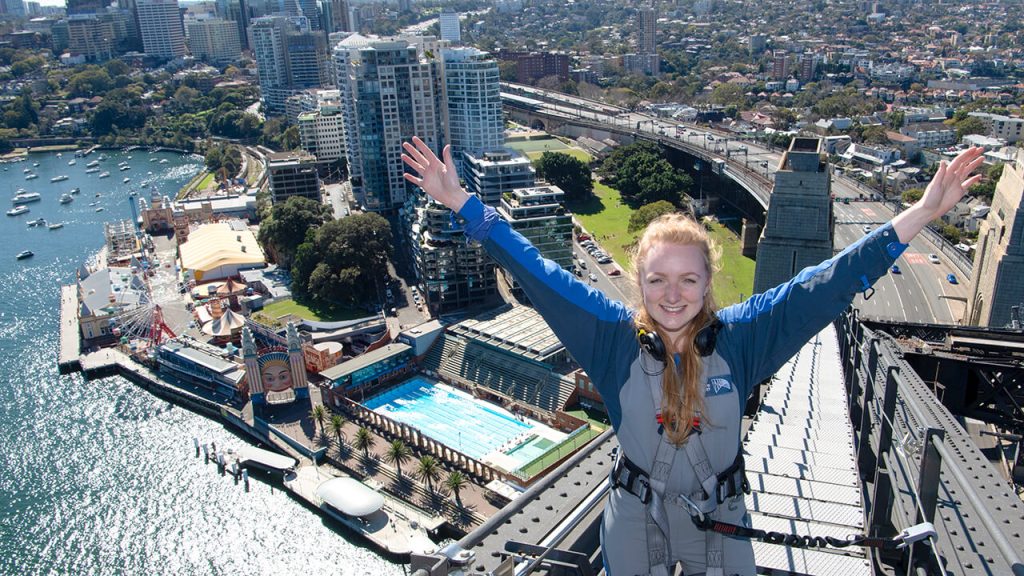
“When I got back from Spain, Anthea says, ‘I don’t really want you back here. I’m used to running the place now. Why don’t you go and see if you can win BridgeClimb?’”
David put a bid team of key experts together, stitching them up with NDAs before his competitors could employ them.
BridgeClimb gets about 200,000 visitors a year compared to Scenic World’s one million [currently charging $54 for adults and $39 for children]. Still, the Scenic World team could see from the tender documents that the bridge’s high-priced tickets [up to $388] meant turnover was similar.
Scenic World’s key asset was its experience in handling large groups at great heights. And they were pretty sure they could bring more large overseas tour groups in, so maybe they could bid more than the incumbents. While not disclosing dollar values, Hammon concedes they won’t make anywhere near the profits of the first owners. “They had a very good deal, and the government was not interested in replicating that deal”.
Hammons Holdings won the bid over 13 others and took over on October 31, 2018.
Crisis not wasted
Fourteen months later, Sydney Zoo opened in the western suburb of Blacktown. Hammons Holdings is among its five shareholders. It is getting 800,000 annual visitors.
They were all set to weather any crisis, they thought. Then the 2019-20 bushfires hit, and while the flames didn’t affect them directly, the smoke destroyed their peak season. Once again, it was off to the bank about all the money they’d borrowed to secure BridgeClimb.
How much had they borrowed? “Enough,” says David. “Quite a few million.”
“We’re running a conservative balance sheet, because these shocks happen in tourism, so you’ve got to be ready for them. Every five to seven years, something will mess you around. What we’re not prepared for is two of those events back-to-back.”
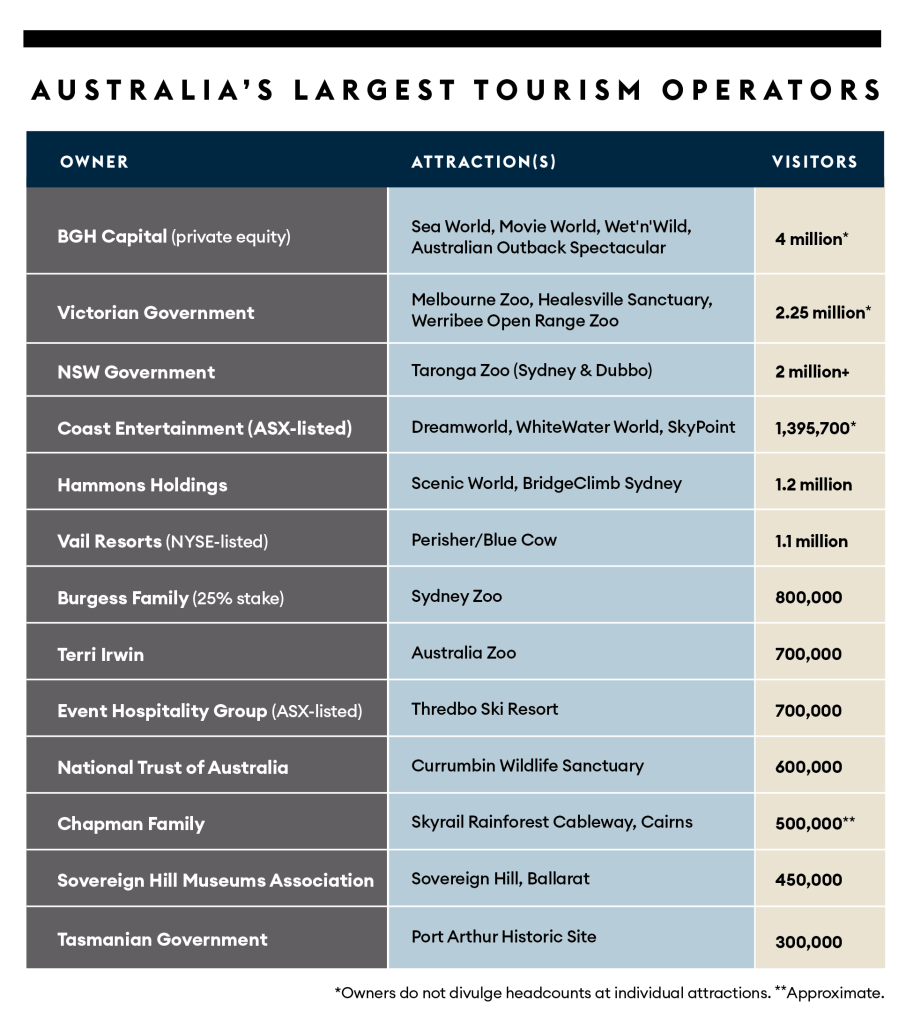
A month after rain put the fires out, COVID-19 came along. Anthea had the job of telling 220 Scenic World workers they didn’t have a job any more, before David drove down to Sydney to tell a similar number of bridge employees the same thing.
During the sporadic openings of the next two years, they didn’t waste the crisis. “Anthea had the great philosophy that her grandfather knew how to run this thing on the smell of an oily rag, and I remember her saying, ‘We’ve got to figure out how to do exactly the same now for Bridge and Scenic World.
“The operations people came back and said they needed maybe six people to run ticketing, and she says, ‘Go do it again.’ They come back with four, and she says, ‘Cool, go do it again.’ And she just kept challenging them to make it run more efficiently, and that’s all carried over to today. So even though we’re not running as many visitors as we previously had, the businesses are more profitable.”

They were then able to parlay the skills learned in the BridgeClimb bid to win the bid to run the slopes at the indoor skiing centre, Winter Sports World, due to break ground in the outer western Sydney suburb of Penrith this month.
And they’ve even been able to pay dividends to their parents and three silent-partner sisters. “To have gone through the BridgeClimb bid, the bushfires, then COVID-19 and be worried for the better part of two and a half years, whether there’d even be a business to worry about, it makes me very happy that we can split the reward evenly between us now,” says David.
Chief emotional officer
Scenic World is still majority owned by Philip and Peta Hammon, but ownership of the business will pass to their five children, David, Arabella, Anthea, Emily, and Lydia.
The entire clan – totalling 23 with partners and children – went on a ski trip to Japan in January for the first such group holiday, says David. “Our parents created a family council and constitution, and the sisters and I have worked hard on being adult friends because it’s very easy to behave like you all behaved when you were 10 years old, which can be a disaster.”
A paid consultant acts as “chief emotional officer” at family council meetings to smooth things out. “It allows you to deal with all of the things that families often don’t deal with,” David explains. “Sometimes, the first time the siblings understand what’s in the will is when it gets read out by the executor. That’s not the program we run here.
“But some of those conversations can be quite emotive. So, it’s really helpful to have someone to guide the meeting.”
So after two decades of crises and calculated risks, the Hammons are still daring to step off that edge.

